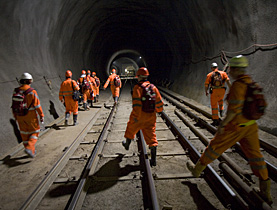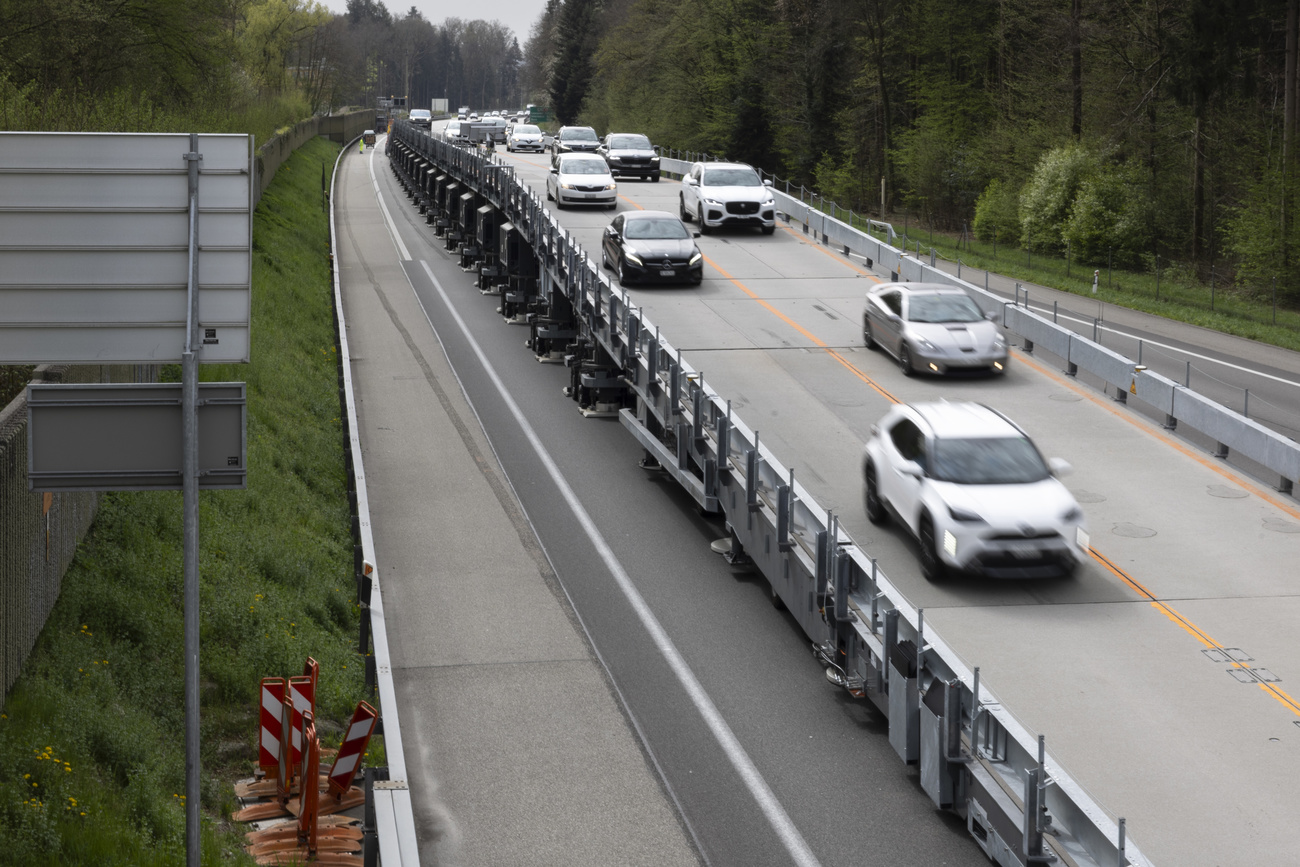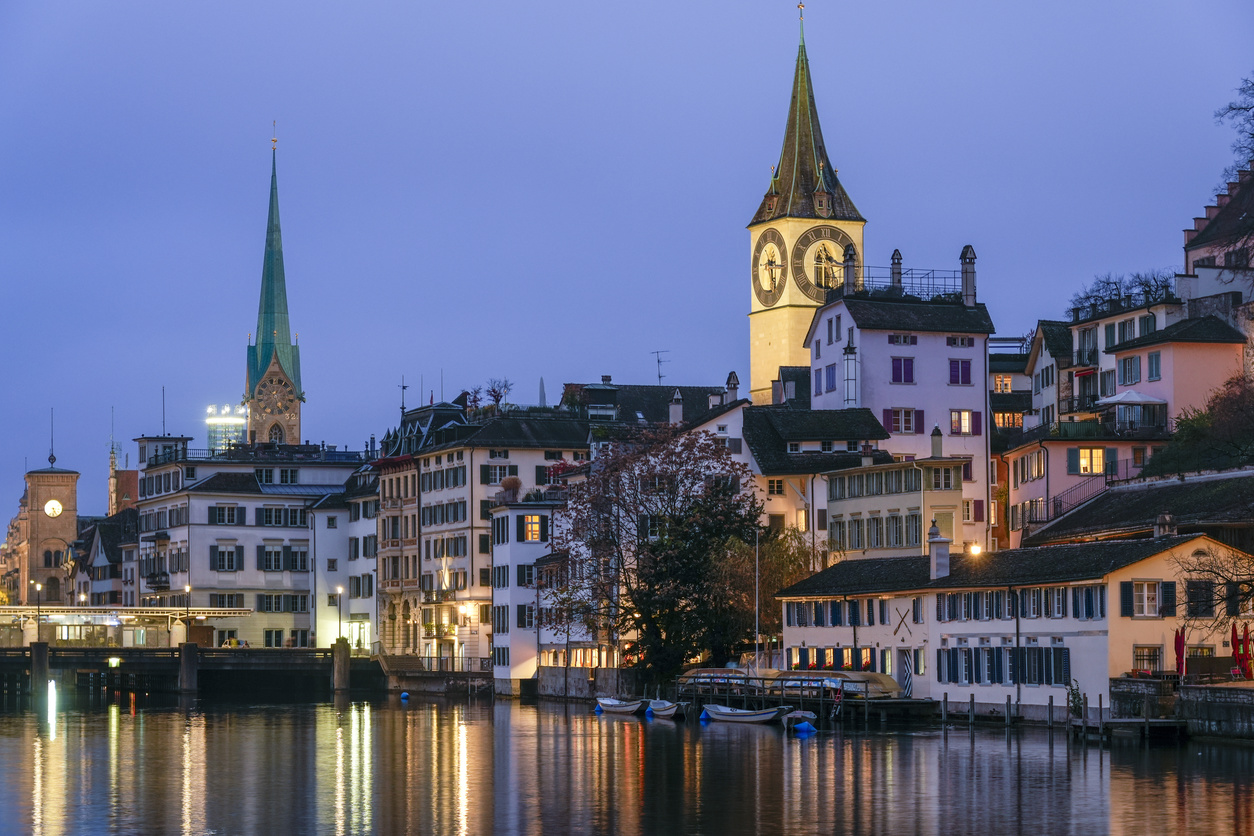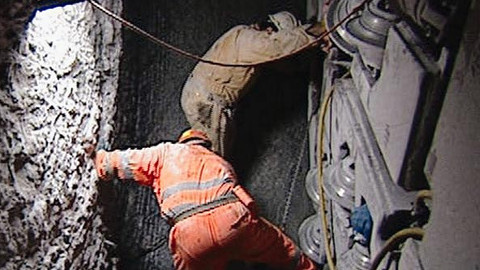Alptransit, a record-breaking tunnel

Under the St Gotthard massif, they are beavering away to construct what, at 57 kilometres, will be the world's longest railway tunnel.
From 2017, trains will flash through at 250 kph, cutting the journey time between Milan and Zurich by one hour. It’s a project which perpetuates Switzerland’s pioneering tradition in tunnel construction.
Helmet, orange overalls, boots: the descent into the heart of the mountain begins in the prefabricated changing rooms of the Alptransit worksite at Faido, in the upper Leventina Valley (Ticino).
Every worker carries a back-pack containing breathing apparatus for use in the event of an emergency. It would enable them to survive for 50 minutes, but of course the hope is that they will never need it.
We’re off: a van takes us into the mountain. It is very hot: around 28 degrees celsius in the underground passageway. After a rapid descent, we arrive at a station of sorts. Here we get out and board a little train, which takes us north to the point the excavators have reached.
After a 20-minute journey, we leave the train and walk to the head of the tunnel boring machine. This mechanical monster is over 400 metres long, weighs around 3,000 tonnes and is roughly ten metres in diameter.
Its task is to eat through the rock still separating Faido from Sedrun – in early summer 2009 it had approximately eight kilometres to go. When the final wall of rock is pierced, probably in 2010, the excavation work will be over and it will be possible to begin installing the railway equipment.
A Herculean task
The engineers supervising our visit are optimistic, but nevertheless cautious: even though the work is going well, they explain, there are always unpredictable factors. The stretch of the base tunnel under the St Gotthard still to be dug, is the deepest underground and temperatures could be as high as 50 degrees.
It is easy to understand what a titanic undertaking this is: just raise your eyes to the ceiling of the tunnel and consider that that there are almost two kilometres of mountain above your head!
A Swiss tradition
Getting over or under natural obstacles is an integral part of modern Swiss history. The adventure of digging tunnels through the Swiss Alps began as far back as 1708. The “Urnerloch”, near Andermatt, 64 metres long, was the first road tunnel for goods and passenger traffic.
Almost two centuries later, trains, too, began crossing the Alps, bringing an end to difficult journeys on muleback over the St Gotthard pass, when in 1882 the St Gotthard railway tunnel was inaugurated. Fifteen kilometres long, it took ten years to complete and cost the lives of almost two hundred workers. For some time, it was the longest tunnel in the world.
When the record was eventually broken, it was by another feat of Swiss engineering: 1907 saw the inauguration of the Simplon Tunnel, four kilometres longer than the St Gotthard. The Simplon remained the world’s longest tunnel until the 1980s.
Popular enthusiasm
This latest chapter in the tunnel-building epic is causing a great deal of excitement, in Switzerland and abroad. Five journalists from Russian television were in our party visiting the tunnel.
Using an interpreter, they never stopped questioning Jens Classen, manager of the Faido worksite. They wanted to know the cost of the project, the reason it had been delayed and the nature of the geological problems. Their documentary on the world’s longest tunnel will be broadcast nationwide in Russia.
American journalists are showing continuing interest. Recently, the tunnel was visited by film crews from the Discovery Channel and National Geographic.
The worksites are also visited by thousands of people on open days. And the same is true of the visitor centres. By mid-June 2008, the Alptransit worksites had welcomed a total of over half a million people since the project began in 1996.
Added value for Switzerland
“In Switzerland itself, one of the things people find most fascinating about Alptransit is the sheer scale of the project. Very many Swiss citizens are proud to see such a vast and sophisticated project undertaken by so small a country,” said spokeswoman Monica Knapp:
It is also worth pointing out that the Swiss are among the most enthusiastic rail users on the planet: the average Swiss person travels roughly two thousand kilometres by train each year.
One reason why the construction of a new line through the Alps has special significance, is that railways have always been a factor in national cohesion, bringing the different language regions closer together.
Another important consideration is the hope that the new alpine railway crossing will safeguard the environment and improve people’s quality of life, promoting the transfer of heavy good traffic from road to rail and offering a real alternative to journeys by car or plane.
Back on the surface at Faido, we hand in our equipment. Looking at the names on the changing-room lockers, we are struck by the fact that very few of the people working in the bowels of the mountain are of Swiss nationality. The vast majority of the 2,000 or so manual workers come from abroad, in particular from Austria, Germany and Italy.
For this reason, too, the tunnel being built under the St Gotthard is a work of international significance.
The alpine passes have always been an important transit route between Switzerland and Italy.
The opening up of the Gotthard pass in the 13th century was a key event in Swiss history.
The construction of Switzerland’s first alpine tunnel, the Urnerloch, in 1708, made the Gotthard safer.
The development of the railways in the second half of the 19th century led to a boom in tunnel construction.
The first railway tunnel was the 90m long Schlossberg tunnel near Baden in northern Switzerland.
The most important was the first Gotthard rail tunnel, built from 1871 to 1881.
Other major tunnels were the Simplon (inaugurated 1907) and the Lötschberg (completed 1913).
The period after the Second World War saw a number of road tunnels, including the Gotthard, completed in 1980, which for 20 years was the longest in the world.
Swiss voters approved the plan to build the New Railway Links through the Alps (NRLA) in 1992.
The first NRLA project, a second Lötschberg tunnel, opened in 2007; the Gotthard is the second.
Both are much deeper than their predecessors, so trains do not have to climb to reach them, and can thus be longer and faster.

In compliance with the JTI standards
More: SWI swissinfo.ch certified by the Journalism Trust Initiative













You can find an overview of ongoing debates with our journalists here . Please join us!
If you want to start a conversation about a topic raised in this article or want to report factual errors, email us at english@swissinfo.ch.